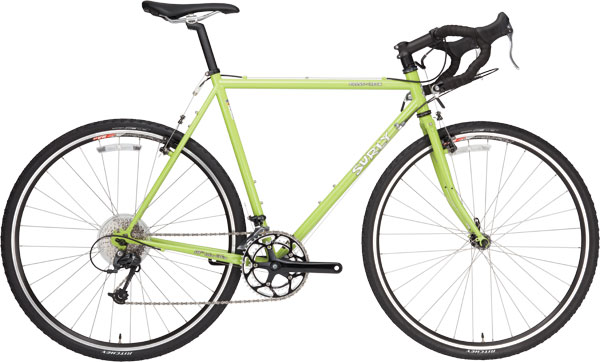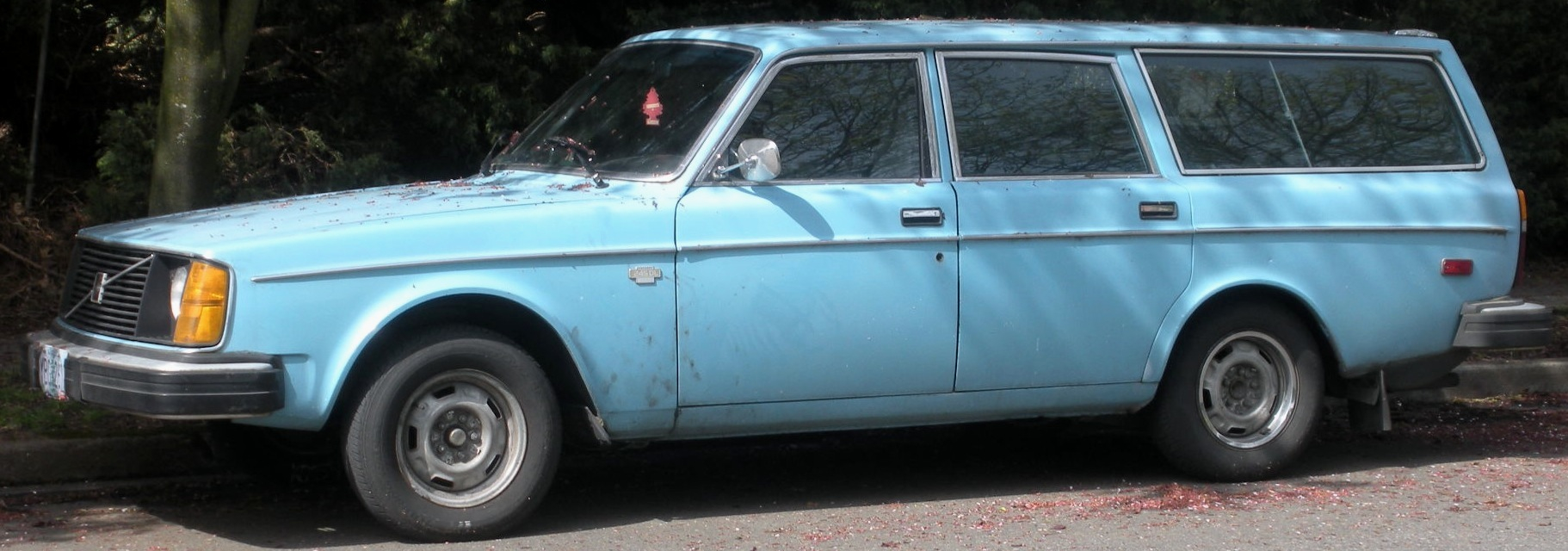It wasn't long ago that I said my next bike would be one I built myself...
But N+1 is a mighty force, maybe even the proverbial "irresistable force" that cannot be overcome by the "immovable object".
 |
| Note: This is NOT my bike -- this image is from the Surly site. |
Yep,
I bought another bike. A Surly Cross Check, to be precise. Well, back
up a second. I bought a Surly Cross Check FRAME. And fork. I'm building
it up with a combination of parts-bin goodies and eBay/community
classified selections, a somewhat eclectic mix of parts new and old.
The
bike is a bit of a tank. For good reason. Yeah, it's heavy.
Indestructible heavy. Which is good. Fender and rack eyelets, clearance
for BIG sneakers, cantilever brakes. Cyclo-cross race-able if you don't
mind hefting the beast onto your shoulder.
I bought it for a few reasons:
*
The Barkley Softride I've been using for my commuting is limited to
28mm tires. Not small, as my TiCycles Softride is limited to 23mm tires
even without fenders. The Cross Check has clearance for 45mm tires
without fenders, and just slightly smaller with fenders. I'll be running
35mm initially, and may go wider later. Big meats on the rims means riding with abandon. Or at least more abandon. Not having to worry about running off the pavement if situations get dicey, not having to loft the bike over every crack in the concrete. A little more forgiving to both rider error and intentional tom-foolery.
 *
The bike screams "utility", like a Volvo station wagon. Not the yuppie,
soccer-mom 2000's version of the Volvo, but the 1970's nerdy-engineer
type Volvo that is driven because of it's economy and longevity. I can't
quite bring myself to entertain the idea of racks and panniers, though.
*
The bike screams "utility", like a Volvo station wagon. Not the yuppie,
soccer-mom 2000's version of the Volvo, but the 1970's nerdy-engineer
type Volvo that is driven because of it's economy and longevity. I can't
quite bring myself to entertain the idea of racks and panniers, though.
* The bike also screams "thrash me". I plan to do that as well.
*
These things are cheap. Not "cheap" as in crappy, "cheap" as in
inexpensive. Sure, it helps that I have access to wholesale, but even at
retail these things are a bargain.
*
Initially, the shop was wanting to do a "6-pack" deal and was taking
pre-orders. I got in on the deal partly to help out the shop. Turned out that mine was about the only one, and the owner
didn't want to bank-roll another 4 frames/bikes for shop stock. Can't
blame him for that. But I was hooked in, and excited.
*
It makes me feel like a kid again. You know, back when I didn't have a
"road bike" (or three) and a "mountain bike". I had "a bike", and it
went where-ever I wanted to go. Trails, the REAL trails, were for
hiking, or goofing around in the woods. But I rode my "a bike" on roads,
driveways, dirt paths, gravel roads...
This will become my commuter. And will see a lot more duty as well. Maybe even to the point that I (*gasp!*) sell a bike.
And when I'm riding along and see some dirt road that takes off somewhere, I'll be able to just veer off and see where it goes.
It was delivered to the shop on Monday. I've got it about half built up now... I'll post up a "test drive" report soon...
Don't
get me wrong on this -- I'm still going to build bike frames at some
point, hopefully sooner rather than later. I've still got the itch (in a
BIG way) to get creative with a torch and steel. I've been killing a
lot of time and brain cells in frame building forums (fora?) lately,
getting my brain all smart about building and brazing. The thing that holding me back? Practical experience.
And equipment. Is that another N+1 coming on?










